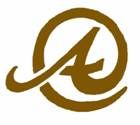According to Bankrate.com's 2013 Mortgage Closing Cost Survey, today's typical mortgage applicant pays 6 percent more in origination and third-party fees as compared to 2012. Last year, costs had dropped seven percent.
For today's home buyers and refinancing households, rising closing costs change the math of getting a mortgage. It's helps to be prepared, and to know how zero-closing cost mortgages can improve your mortgage shopping.
What Is A Mortgage Closing Cost?
Mortgage "closing costs" are fees consumers pay to start a new mortgage, and can be grouped into two categories.Origination/Lender Charges
Origination/Lender fees are fees paid in conjunction with your loan's origination. They include line-items from your settlement statement which may include an application fee, a rate lock fee and/or origination points, for example.Listing all such fees is difficult because fees masquerade under different titles from bank-to-bank, and from product-to-product. One bank's "underwriting fee" is another bank's "processing fee", for example, and VA loans and FHA loans have specific costs which don't exist for conventional ones.
This is why rate shoppers who attempt to shop banks "fee-for-fee" tend to strike out. It's an impossible comparison.
A better plan for today's home buyers and refinancing households is to just ignore the individual line items which make up lender's origination fees completely. Instead, savvy shopper should focus on the sum of origination charges -- it's inclusive of all fees and makes for simpler comparisons.
Look for Section 800 on your Good Faith Estimate (GFE). It's the section in which origination fees and lender charges are listed and summarized.
Third-Party Charges
The second type of closing costs are "third-party" costs.Third-party costs are fees paid to parties other than your mortgage lender. Third-party fees can include the costs of your appraisal(s), the cost of your credit report, and title company settlement costs.
In general, when comparing Good Faith Estimates against each other, you should ignore whatever third-party fees are listed. This is because third-party fees are often fixed-cost items which cost the same no matter which bank you ultimately work with.
Your appraisal costs what it costs; your credit report costs what it costs; and your choice of lenders won't affect that. That said, one of the rare times that third-party costs come into play is with respect to HARP refinancing; or via the FHA Streamline Refinance and VA Streamline Refinance. These three programs often waive the need for a home appraisal. Some lenders, however, may insist on performing one, which can affect costs.
Be sure to ask your lender whether an appraisal will be required.
Convert Your Mortgage Into A Zero-Closing Cost Mortgage
Closing costs are 6% higher as compared to last year and paying for costs can be costly -- especially if you live in high closing cost states such as Hawaii, California or New Jersey.There are three ways to pay your mortgage closing costs :
- You can pay your costs with cash at closing
- You can add your closing costs to your loan balance (for refinances)
- You can waive your closing costs via a zero-closing cost mortgage
When you pay your costs with cash at closing, you often get access to the lowest combination of mortgage rate and loan size. In the long-term, this reduces the amount of mortgage interest paid to your lender, and can result in a quicker principal balance reduction.
When you add your closing cost to your loan balance, you save your savings which can help with financial planning. It's important for all homeowners to have an emergency cash reserve and using your reserve to pay for closing costs could be foolish.
Or, you can waive your closing costs altogether via a zero-closing cost mortgage.
Zero-closing cost mortgages are exactly what they sound like -- they are mortgages for which the homeowner pays absolutely zero closing costs -- nothing is added to the loan balance, nothing is "hidden" in the figures.
With a zero-closing cost mortgage, all fees down to the last penny are paid by the lender instead of by you. In exchange for this payment, the homeowner agrees to accept a slightly higher mortgage rate than the day's "market rate" -- typically an increase of 0.25 percentage points.
As an example of how this works, let's say a homeowner in Loudoun County, Virginia wants to borrow at the local jumbo conforming loan limit of $625,500 and doesn't want to pay Virginia's closing costs with cash. In most cases, the homeowner could add the costs to his loan. Here, however, it's not an option. This is because the loan balance would exceed conforming loan limits if the closing costs were added.
The homeowner would have to use a zero-closing cost mortgage, then.
If today's mortgage rates are 4.50%, the mortgage applicant would get a rate near 4.75% from his bank. In return for taking the higher rate, all of the applicants closing costs would be waived.
Zero-closing cost mortgages are available with purchases and refinance.
Get Today's Zero-Closing Cost Mortgage Rates
In many refinance scenarios, zero-closing cost mortgages are an economically-sound decision. When you pay no costs, you get a refinance with infinite ROI -- there are measurable monthly savings and no closing costs to recoup. You break-even on the mortgage before it ever even starts.On purchases, they can work out, too. Paying fewer closing costs means that you can increase the size of your home downpayment, or reserve some money for repairs.
Closing costs are rising, Bankrate.com tells us, and they're expected to rise through 2014, too. Make sure to have a plan. Know what today's zero-closing mortgage rates look like and see where you can save on fees.
To receive personalized rates please email me at eneal@athccorp.com with your available times to discuss your options.


No comments:
Post a Comment
Note: Only a member of this blog may post a comment.